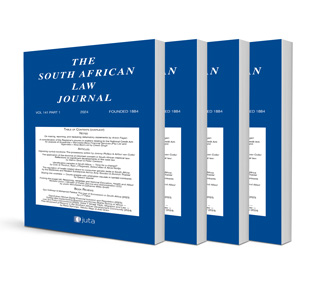Reflections on Wallage v Williams-Ashman & others: Gender discrimination, the optimism bias, freedom of testation, property rights and vesting

NOTE
Reflections on Wallage v Williams-Ashman & others: Gender discrimination, the optimism bias, freedom of testation, property rights and vesting
Author: Mohamed Paleker
ISSN: 1996-2177
Affiliations: Professor, Faculty of Law, University of Cape Town
Source: South African Law Journal, Volume 142 Issue 4, p. 659-675
https://doi.org/10.47348/SALJ/v142/i4a1
Abstract
This note highlights issues arising from the court’s reasoning in Wallage v Williams-Ashman NO & others 2023 (4) SA 113 (SCA) and, particularly, the wording of s 2B of the Wills Act 7 of 1953. The note takes the view that s 2B may need closer examination due to its potential reinforcement of the ‘optimism bias’. It also addresses several miscellaneous issues arising from the case.